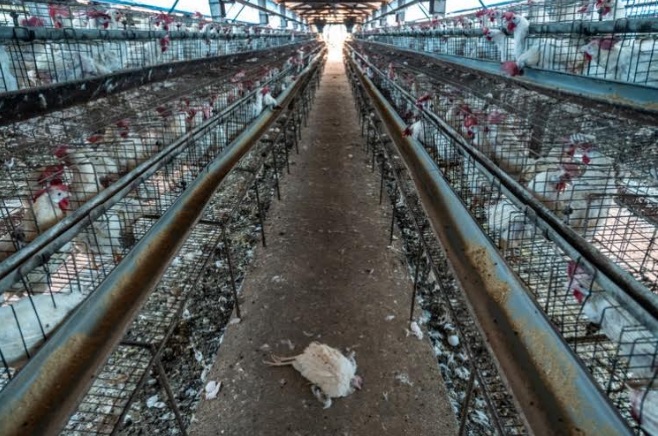
World Animal Protection appreciates the announcement of National Action Plan on Antimicrobial Resistance 2.0 by Union Health Minister, J P Nadda. Speaking on the occasion, Shri Nadda emphasized that antimicrobial resistance (AMR) is a major public health concern that can only be addressed through collective action. He noted that the journey began in 2010 with initial discussions, followed by the launch of the first National Action Plan – AMR in 2017. “While AMR is a multisectoral issue and requires a One Health Approach for its containment, only when each sector, i.e., human, animal, agriculture and environment sector are committed for action to contain AMR, can the One Health approach be successful,” the Press Information Bureau release reads. World Animal Protection has provided substantive input to the development of this plan and appreciates the linkage to animals in this document and hopes this will lead to better animal welfare as well as improved human health.
 |
Poor conditions in a factory farm Credit: World Animal Protection
Antimicrobial Resistance is one of the biggest threats to global health, endangering both human and animal health, the environment, food security, economic development and equity. According to the World Health Organization (WHO), around 1.27 million deaths occurred from drug resistant infections in 2019. Today, antibiotics are globally used for therapeutic purposes, prophylactic measures, and as growth promoters in commercial animal production systems. The use of antibiotics in chickens is expected to triple in India by 2030 compared to 2015 as a consequence of the increasing consumer demands and intensive farming practices. 90% of the total antimicrobials used in farms are released to the environment through animal excreta like urine and faeces.
“The unregulated use of antibiotics in poultry may have serious implications for developing economies, especially for India, the biggest consumer of antimicrobials in the world. This includes a possible increase in export rejections and trade loss due to the stringent import policies in countries like the EU on the use of non-therapeutic antimicrobials for animal/animal-based products. There is ample literature linking the indiscriminate use of antibiotics with the rapid development of Antimicrobial Resistance (AMR) in various livestock sectors, including poultry and aquaculture in India,” says Gajender Kumar Sharma, Country Director, World Animal Protection in India.
The studies have found that about 90% of the total antimicrobials used in farms are released to the environment through animal excreta (urine and faeces). This release is a cause of concern as antimicrobials can persist for long periods, contributing to the development and selection of resistant bacteria, which are then open to infect both poultry and humans living nearby. There is an emerging concern globally on AMR, and India is working at various levels to minimise the risks associated with it. Toxics Link has developed a series of reports on antibiotic pollution and its impact on the overall environment. In this context, to understand the existing scenario of antibiotic pollution from poultry on the overall environment and a factor in the development of AMR, Toxics Link, in collaboration with World Animal Protection, conducted a study on the presence of Antimicrobial Resistance Genes (ARG) in the environmental matrices surrounding poultry farms in Tamil Nadu and Andhra Pradesh. The lab-based study established that the environmental samples surrounding poultry factories contained facultative pathogens and opportunistic pathogens, along with ARGs against many of the antimicrobials classified under World Organisation of Animal Health(OIE) and WHO’s list of Critically Important Antimicrobials.
Link: bit.ly/WAP_Factory_Farming_Health_Impacts
Film accompanying report at this link: www.youtube.com/watch?v=zpV_aC_vkKg
These are classes of antimicrobials essential for the treatment of specific diseases, including those from non-human resources (e.g., Glycopeptides and Tetracycline). Furthermore, the study identifies gaps in the current regulatory framework for antimicrobial drugs and recommends amendments to the current system, highlighting the need for the adoption of newer policies and incentives against the indiscriminate use of antimicrobials in the poultry sector.
“In the wake of the COP 30 conference in Belém in Brazil and the announcement by the Union Health Minister, World Animal Protection takes these recent occasions to emphasise that the use of antibiotics in any kind of intensive animal farming and rearing is only done with due diligence. We further highlight that high animal welfare is a key solution to reducing the need for antibiotics, as healthier animals require fewer medical interventions. Improving welfare conditions in the animal farming sector must therefore be an integral part of India’s AMR (Antimicrobial Resistance) Action Plan,” says Gajender Kumar Sharma.



